Carcinoembryonic Antigen-Related Cell Adhesion Molecule 1 (CEACAM1), also known as CD66a or Biliary Glycoprotein (BGP), belongs to the immunoglobulin superfamily and is widely present in various cells. It has multiple biological functions, including cell - to - cell adhesion and signal transduction, and is closely linked to the pathogenesis of many diseases. Studies on CEACAM1 can help uncover the mechanisms behind these diseases and provide a theoretical foundation for diagnosis, treatment, and drug development. This article reviews the background, research mechanisms, signaling pathways, associated diseases, and the latest drug - related research on CEACAM1 to fully illustrate its importance in biological and medical fields.
1. Background of CEACAM1
1.1 Structural Characteristics
CEACAM1 is a transmembrane glycoprotein composed of a variable number of extracellular immunoglobulin (Ig) - like domains, a transmembrane region, and a cytoplasmic tail. The cytoplasmic tail exists in long (L) and short (S) forms. The long form contains two immunoreceptor tyrosine - based inhibition motifs (ITIMs), which can recruit signaling molecules such as Src homology region 2 - containing phosphatase 1 (SHP - 1) and participate in negative signaling regulation. The short form lacks phosphorylatable tyrosine residues and differs in function from the long form [1]. While CEACAM1 structures show some conservation across species, differences exist. For example, human leukocytes mainly express long - cytoplasmic - tailed CEACAM1, whereas rodent leukocytes express both long and short - cytoplasmic - tailed CEACAM1 [2]. The extracellular Ig - like domains enable CEACAM1 to recognize and bind to other molecules, laying the foundation for its diverse biological functions.
1.2 Expression and Distribution
CEACAM1 is expressed in various cell types, including epithelial cells, endothelial cells, and hematopoietic cells. Expression levels and isoform ratios vary across tissues and cells. In normal adult intestines, CEACAM1 is mainly located on the luminal side of epithelial cell membranes, while in embryonic intestines and colorectal tumors, it is found on adjacent cell membranes. Among leukocytes, human granulocytes, B - and T - lymphocytes express CEACAM1. Human granulocytes also express GPI - anchored CEACAM6 and CEACAM8, while corresponding rodent cells express both long and short - cytoplasmic - tailed CEACAM1 isoforms.
2. Research Mechanisms of CEACAM1
2.1 Cell Adhesion Function
CEACAM1 mediates cell - to - cell adhesion, including homophilic and heterophilic adhesion. Homophilic adhesion, achieved through interactions between N - domains, is crucial for cell recognition and connection, and maintaining normal tissue structure and function. Heterophilic adhesion involves interactions between CEACAM1 and other cell - surface molecules. For instance, CEACAM1 interacts with E - selectin via sialylated Lewis ^x antigen, participating in leukocyte migration and positioning. Abnormal CEACAM1 expression in tumor cells may affect their adhesion properties, impacting tumor invasion and metastasis.
2.2 Receptor Function
As a receptor for various microbes, CEACAM1 plays a key role in pathogen infection. It serves as the receptor for mouse hepatitis virus, Neisseria gonorrhoeae, Neisseria meningitidis, Haemophilus influenzae, Escherichia coli, Salmonella, etc. When pathogens bind to CEACAM1, they trigger intracellular signal transduction, affecting cell function and immune responses. CEACAM1 may also bind to unknown ligands, participating in more physiological and pathological processes.
3. CEACAM1 Signaling Pathways
3.1 Interaction with SHP - 1
When tyrosine residues in the long cytoplasmic tail of CEACAM1 are phosphorylated, SHP - 1 binds to CEACAM1 and is recruited to the cell membrane vicinity, modulating intracellular signaling. This interaction is vital for inhibiting cell proliferation and regulating immune responses [3]. In T - cells, CEACAM1 - SHP - 1 binding suppresses T - cell activation and proliferation, regulating immune response intensity. In tumor cells, abnormal CEACAM1 - SHP - 1 interaction may impact tumor growth and development [4].
3.2 Activation of Erk/MAP Kinase Pathway
In rodent granulocytes, anti - CEACAM1 antibodies activate Erk1/2, regulating cell function. In human granulocytes, while anti - CEACAM1 antibodies don't activate Erk1/2, anti - CEACAM8 antibodies do, and CEACAM1 and CEACAM8 are physically associated. This suggests CEACAM1 may indirectly regulate the Erk/MAP kinase pathway via CEACAM8 complexes. Pathway activation is closely related to cell proliferation, differentiation, and apoptosis, and is significant in immune responses and tumorigenesis.
3.3 Other Signal Modulation Mechanisms
CEACAM1 may also interact with other signaling molecules to regulate intracellular pathways. For example, it may interact with molecules like Adapter protein 1, affecting protein localization and sorting, and thus cell function. Different CEACAM1 isoforms may also regulate each other through dimerization, impacting signaling functions. These modulation mechanisms may vary across cell types and physiological/pathological conditions and require further study.
4. CEACAM1 and Associated Diseases
4.1 Tumors
CEACAM1 expression is altered in many tumors and is closely related to growth, invasion, and metastasis. In colorectal, breast, and lung cancers, CEACAM1 is usually down - regulated. As a tumor suppressor, it affects tumor development by inhibiting cell proliferation and regulating adhesion. For example, transfecting the CEACAM1 gene can suppress colon cancer cell growth. However, abnormal CEACAM1 expression can sometimes promote tumor progression, with mechanisms still unclear and possibly linked to interactions with other molecules in the tumor microenvironment.
4.2 Infectious Diseases
As a receptor for various pathogens, CEACAM1 plays a key role in infectious disease development. For instance, Neisseria gonorrhoeae and Neisseria meningitidis invade host cells by binding to CEACAM1, causing infections. Haemophilus influenzae also targets human CEACAM1, leading to respiratory infections. Studying CEACAM1 - pathogen interaction mechanisms can help develop new infectious disease treatments.
4.3 Immune - Related Diseases
CEACAM1 plays an important regulatory role in the immune system, and its dysfunction can lead to immune - related diseases. In T - cells, abnormal CEACAM1 expression and function can affect activation, proliferation, and differentiation, thereby impacting immune response balance. For example, in autoimmune diseases, CEACAM1 may regulate abnormal immune cell activation, causing tissue damage. Additionally, CEACAM1's role in inflammatory responses is of great interest, as it may influence inflammation development and resolution by regulating inflammatory cell recruitment and activation.
5. Latest Research Progress on CEACAM1 - Targeted Drugs
Currently, CEACAM1 - targeted drug development mainly focuses on cancer treatment and has achieved several advances. In April 2025, Purple Biotech announced final data from a Phase II clinical study on CM24 combined with nivolumab and chemotherapy for pancreatic cancer at the AACR 2025 Annual Meeting. In 31 biomarker - enriched patients with advanced/metastatic pancreatic ductal adenocarcinoma (PDAC), the combination showed proof - of - concept. In patients with specific serum or tumor CEACAM1 expression levels, it reduced the risk of death by 78% and the risk of disease progression or death by 95%. Several other early - stage CEACAM1 - targeted studies are ongoing, and some are summarized in the table below.
| Drug |
Drug Type |
Investigational Indications |
Investigational Institutions |
Highest Phase |
| CM-24 |
Monoclonal antibodies |
Pancreatic cancer | Colorectal adenocarcinoma | Advanced malignant solid tumors | Melanoma | Metastatic pancreatic cancer | Ovarian cancer | Metastatic pancreatic adenocarcinoma | Pancreatic neuroendocrine tumors | Papillary thyroid carcinoma | Recurrent non-small cell lung cancer |
FameWave Ltd. | Purple Biotech Ltd. |
Phase 2 clinical trial |
| YB-200 |
Antibody |
Hepatocellular carcinoma |
Ymmunobio AG |
Preclinical |
| 64Cu-COTA-DIA 12.3 |
Diagnostic radiopharmaceuticals |
Tumor |
University of Urbino |
Preclinical |
| DIA-12.3 |
Monoclonal antibodies |
Tumor |
University of Urbino |
Preclinical |
| CeCART |
CAR-T |
Colorectal cancer | Pancreatic cancer |
Orgenesis, Inc. |
Preclinical |
| NB-003 |
Monoclonal antibodies |
Solid tumor |
Luosheng Biopharmaceutical Co., Ltd. (Suzhou) |
Preclinical |
| NB-203 |
Bispecific antibodies |
Tumor |
Luosheng Biopharmaceutical Co., Ltd. (Suzhou) |
Preclinical |
6. CEACAM1-Related Products Recommendation
CEACAM1, a multifunctional cell adhesion molecule, plays a crucial role in cell biology and immunology. CUSABIO offers high - activity CEACAM1 recombinant proteins, antibodies, and ELISA kits, supporting researchers in their study of CEACAM1 mechanisms and exploration of its potential clinical value.
● CEACAM1 Recombinant Proteins
● CEACAM1 Recombinant Antibodies
References
[1] Nakajima A, Iijima H, Neurath MF, et al. Activation-Induced Expression of Carcinoembryonic Antigen-Cell Adhesion Molecule 1 Regulates Mouse T Lymphocyte Function[J]. The Journal of Immunology, 2002, 168(3):1028-1035.
[2] Singer BB, Scheffrahn I, Heymann R, et al. Carcinoembryonic Antigen-Related Cell Adhesion Molecule 1 Expression and Signaling in Human, Mouse, and Rat Leukocytes: Evidence for Replacement of the Short Cytoplasmic Domain Isoform by Glycosylphosphatidylinositol-Linked Proteins in Human Leukocytes[J]. The Journal of Immunology, 2002, 168(10):5139-5146.
[3] Chen T, Zimmermann W, Parker J, et al. Biliary glycoprotein (BGPa, CD66a, CEACAM1) mediates inhibitory signals[J]. Journal of Leukocyte Biology, 2001, 70(2):335-340.
[4] Kammerer R, Stober D, Singer BB, et al. Carcinoembryonic Antigen-Related Cell Adhesion Molecule 1 on Murine Dendritic Cells Is a Potent Regulator of T Cell Stimulation[J]. The Journal of Immunology, 2001, 166(11):6537-6544.
CUSABIO team. CEACAM1: An Emerging Multifunctional Target for Cancer-Immune Modulation. https://www.cusabio.com/c-21227.html

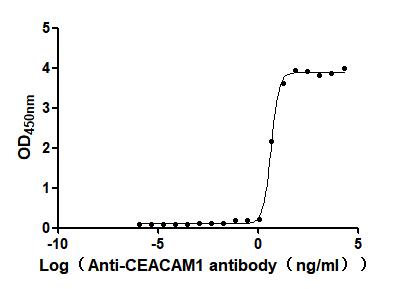
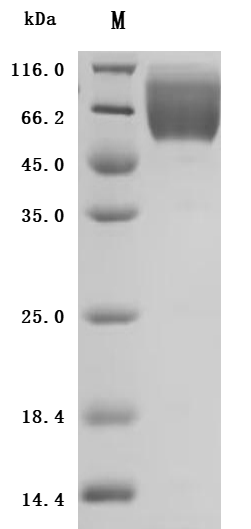
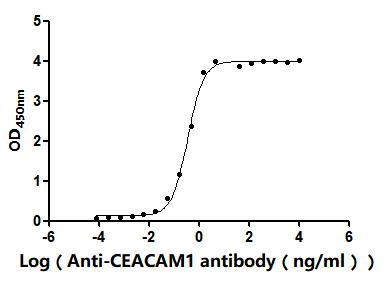
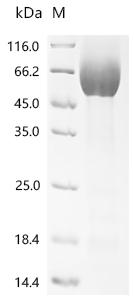
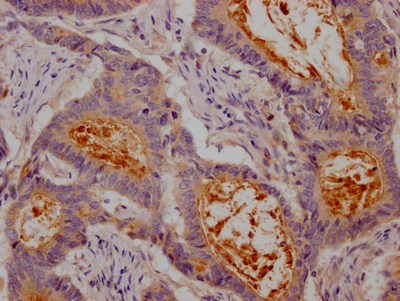

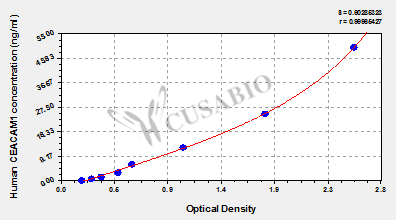



Comments
Leave a Comment